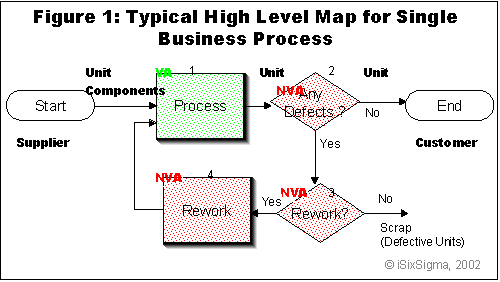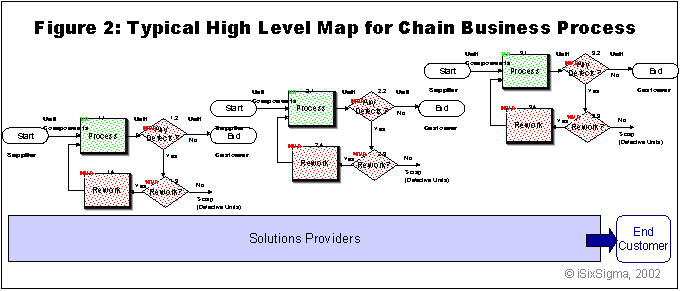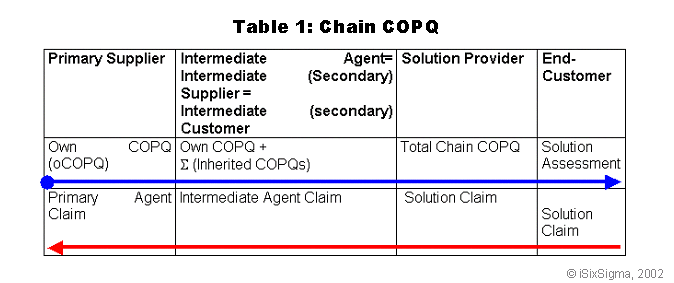
This is my second article from my series reflecting research on strategies and trends in deploying Six Sigma. Our research is performed not in an academic lab but with direct application in companies through advanced team-training concepts and relevant project coaching.
Although subjects vary, the structure of my articles will remain similar starting with
- What and how we are doing now,
- Insufficiencies and challenges, and
- Trends (and new results) in Six Sigma methodology evolution.
I am very thankful to all who have responded to my first article and look forward for future interaction and cooperation.
1. Six Sigma For The Single-Business
Historically, the Six Sigma methodology has been developed for manufacturing or transactional companies selling customers their in-house competence in the form of products and/or services. Although market and customer-relationship infrastructure has been changing dramatically, the methodology still focuses on measuring, analyzing and improving single-business processes (those processes operating entirely within your business).
Key performance indicators are mostly used for monitoring internal business processes and their continuous improvement and for keeping them under control. Such an approach certainly enables one to gather ongoing experience rather than summary experience, and concrete data rather than abstract data or assumptions.
Nevertheless the advantage of Six Sigma has to be used to the full extent related to the whole end-to-end business- and customer-relationship infrastructure. This infrastructure becomes worth more than the single company’s products, stores, factories – i.e. the infrastructure goes beyond any single-business.
Introduction and control of consistent, stable, replicable and capable channel business processes and procedures demand evolution of the Six Sigma methodology, starting from basic definitions and performance metrics.
2. How We Present and Measure Single-Business Processes
Traditionally we start with defining the
- Processes to be improved,
- Their boundaries, and
- The units, which result in the process performance and deliver the value to the process customers within a single-business company.
A set of indicators, which quantify one or several high-level process performance metrics and their targets, is then selected and prioritized. These performance metrics typically reflect the
- Number of different types of defects which arise during the process like defect per unit (DPU), defect per million opportunities (DPMO), etc., and/or
- Duration and/or costs of value-added (VA) versus non-value-added (NVA) process steps of developing and/or delivering one unit (i.e., so-called cost of poor quality [COPQ]).
A typical high level process map for a single business process, presented in a generic way, is shown in Figure 1. One unit could be a product, service or transaction, which consists of one or several unit components. Unit components come from suppliers and units are delivered to the process customers.

3. Obstacles: Redefinition of Value for Customers
Rapid market development radically changes the priorities of customers. Integrated solutions (products and/or services), which can be purchased from one solution- or product/service-provider, will become more desirable than separate components from multiple suppliers. Businesses of different sizes will more often have to turn towards collaboration and to join new supply and integration chains to meet end-customer expectations.
New collaboration and/or supply chain business processes may be presented as a complex dynamic nested structure of single-business processes, as exemplified in the Figure 2.

New business chains have to be very flexible and should be organized and maintained stable and capable to provide solutions which meet the end-customer requirements and expectations in quality, quantity and time.
4. Revisit Basic Six Sigma Categories and Project Scope: Six Sigma Meta-Concepts
When companies introduce single-business Six Sigma and deploy single-business oriented projects, they risk the following:
- Remaining product- and/or service- instead of customer-centric,
- Dramatically underestimating higher level market/customer demands and COPQ, and
- Overestimating their actual capability.
Hence, the following Six Sigma definitions have to be revisited and adopted to the multiple-business (supply chain) businesses:
- Unit: An integrated solution has to be regarded as one Unit within the chain.
- Process: Chain or end-to-end processes across businesses have to be defined and focused upon, especially at the business case-level. We have to broaden respective process boundaries under consideration for performance assessment and improvements.
- Supplier/Customer: Intermediate customers often play both roles of customer and supplier in the chain. The primary supplier and end-customer reflect and determine the means-ends relationships. All intermediate customers and/or suppliers may be considered as secondary ones or chain agents in this context. Nested structures have to be used for modelling the processes, particularly from organizational perspective.
- Defects: The chain works as an amplifier for any type of defect and/or life-cycle deficiencies in sub-processes (sub-businesses), in addition to the single-business process and product deficiencies and life-cycles. That is why by analogy the primary (or own) versus secondary (or inherited) defects and/or process life cycles with different orders of amplification may and should be distinguished.
- Opportunities: The concept of defects per million opportunities is theoretically applicable for the chain with necessary adaptation, but can be easily misused and therefore should be applied with special caution and consensus between business chain-members (if at all).
- Chain Cost of Poor Quality (CCOPQ): A solution provider who faces the end-customers and is liable for the quality, quantity and time of delivering the solutions has the highest COPQ. The common sense way of reacting to any end-customers claims is then to “back-track,” i.e. recalculate the end-claim into the claims towards the intermediate suppliers. It can and should be done using simulation tools.
The logic of accumulating COPQ and back-tracking them to the intermediate business agents in the chain is schematically shown in the Table 1 below.

One very simple (and optimistic) simulation example of a chain with 6 agents is shown in Figure 3. Each agent in the chain has 4 to 8 hours value-added working time per unit with one worker per shift, working in two shifts. Waiting (non value-added time) accumulates dramatically towards the end of the chain. Even when there are no holidays, lack-of-resources or single-agent down-time disturbances in this simulation snap-shot, we see that the chain waiting time accumulates in average into a minimum 64 hours per week at the solution provider site.

This means that in order to remain customer-centered and -capable, the solution providers have to organize and permanently measure, analyze, improve and control alternative chains of suppliers and intermediate agents. For single businesses (intermediate agents in the chain) it is therefore critical to maintain their chain-capability and to monitor, predict and control their incoming and outgoing performance indicators and COPQ.
5. Chain Voice Of Customers
Strategy, methods, and tools for considering, prioritizing and back- and forward-tracking the voice of the customer performance metrics and relevant critical-to-customer performance indicators have to become part of the Six Sigma definition phase for chain businesses.
Customers are going to require greater supply-chain integration in the future. This trend must be considered when launching and/or deploying Six Sigma. Today’s traditional effort in deploying Six Sigma projects should be restructured in order to balance addressing chain voice of the customer with solving internal, single-business process problems.
6. Discussion
This article focuses on increasing integration of end-to-end business processes and relevant adoption of Six Sigma methodology and tools. We have very positive results in deploying such a methodology, particularly due to the real-time monitoring of end-to-end capability for all agents in the solution-provider chain.
Certainly it makes sense when all agents in the chain are aware of the Six Sigma methodology and are willing to join chain-deployment initiatives. One of the easiest ways is to synchronously train Champions, Black and Green Belts across potential chain-business agents. Team (training) projects increase awareness and contribute significantly to the better understanding of the chain Six Sigma meta-concepts.